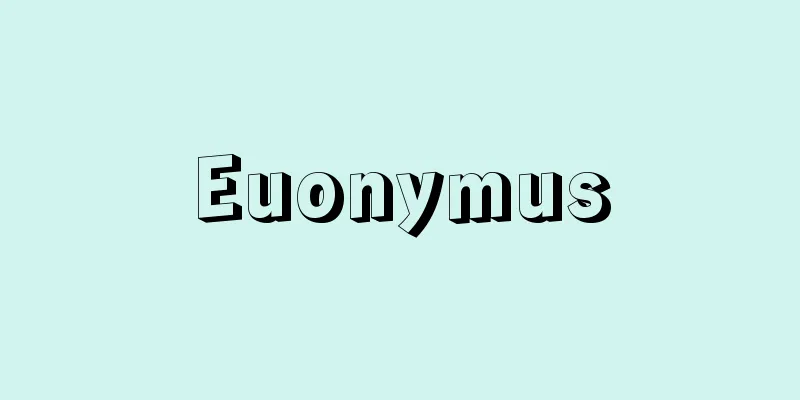Nichiren

|
A monk from the Kamakura period. The founder of the Nichiren sect. Early lifeHe was born on February 16, 1260, in Katami, Tojo-go, Nagasa-gun, Awa Province (Kominato, Kamogawa City, Chiba Prefecture). There are various theories about his origins, including that he was from the Mikuni or Nukina clans, but nothing is known about him other than that he was probably the son of a prominent fisherman. After spending his childhood in a seaside village, at the age of 12 he entered Seicho-ji Temple on nearby Mount Kiyosumi, where he studied under the tutelage of the resident monk Dozenbo (?-1276). At the time, Seicho-ji Temple was an influential mountain temple that combined Tendai sect beliefs in the Lotus Sutra with Pure Land Buddhism and Esoteric Buddhism, and there was a lot of traffic of monks. He eventually became a monk and took the name Zeshobo Rencho. He prayed to the principal image of the Buddha, Kokuzo Bosatsu, to attain wise attainment, but he was unable to solve the problems of life and death. This awareness was likely caused by the social climate in which the Kamakura Shogunate system was being questioned in qualitative terms. In the end, he left Kiyosumi and set off on a study trip to Mount Hiei with the aim of clearing up his doubts. Using Mount Hiei as his base, he visited the great temples of Kyoto and Nara, and even traveled to Mount Koya and Shitennoji to study, but what he saw was the rise of Pure Land Buddhism. He saw this phenomenon as a decline in faith in the Lotus Sutra, which is the orthodox belief of Tendai Buddhism, and vowed to achieve peace in this world by reviving it. [Takashi Nakao September 19, 2017] Spreading the Lotus SutraHe returned to Seichoji Temple and chanted Namu Myoho Renge Kyo for the first time, declaring his intention to preach the Lotus Sutra. This took place on April 28, 1253 (Kencho 5), and is commemorated as the day the sect was founded. It was around this time that Rencho was renamed Nichiren. However, while Nichiren advocated faith in the Lotus Sutra, he also strongly rejected faith in Pure Land Buddhism, and he eventually left Seichoji. For a while, he continued his preaching while relying on the Tendai sect in Boso (Chiba Prefecture), and gained followers among the samurai allied with Chiba no Suke Yoritane (1239-1275), the guardian of Shimousa Province. Tokijonin (1216-1299), Ota Jomyo (1222-1283), Soya Kyoshin (1224-1291) and others maintained the faith throughout their lives. After this, by the beginning of 1257 (Shoka 1) at the latest, Nichiren advanced to Kamakura and established a hermitage in Matsubagayatsu, where he carried out missionary activities. However, a powerful earthquake occurred in August of that year, leaving Kamakura in ruins. Furthermore, natural disasters such as floods, droughts, epidemics, and famines occurred one after another. As a religious person, Nichiren began to search for a way to escape from this anxious state. His conclusion was that the real world could become a Buddha's land only by abandoning the faith of Pure Land Buddhism and fully embracing the faith of the Lotus Sutra. Nichiren wrote "Rissho Ankokuron" (On the Proper Management of the Righteous and Peaceful Land), which calls into question the religious responsibility of those in power, arguing that if the Pure Land Buddhism preached by Honen (Genku) were suppressed and people did not convert to the Lotus Sutra, civil war would break out within the country and the country would be invaded by other countries. Nichiren presented this book to the former regent, Hojo Tokiyori, and advised him to overcome the disaster by implementing good governance based on faith in the Lotus Sutra. This was on July 16, 1260 (Bun'o 1). [Takashi Nakao September 19, 2017] PersecutionOpposed to Nichiren's claims, Pure Land Buddhist believers burned down his Matsubayani hermitage in the night of August 27, 1260 (Matsubayani Persecution). Having narrowly escaped, Nichiren moved to Shimousa and waited for the situation to calm down, before heading to Kamakura again the following year in 1261. However, he was captured again on May 12 and exiled to Ito in Izu Province (Ito City, Shizuoka Prefecture) (Izu Persecution). There he was entrusted to Ito Hachirozaemon, who prayed for him and cured him of his illness, and was presented with a standing statue of Shakuson that he had retrieved from the sea, which he kept as his attendant Buddha for the rest of his life. He was pardoned in 1263 (Kōchō 3) and returned to Kamakura to resume his missionary activities. The following year, on November 11, 1264 (Bun'ei 1), Nichiren was visiting his hometown when Tojo Kagenobu (date of birth and death unknown), who had long been an enemy of Pure Land Buddhism, ambushed him on Matsubara-oji in Tojo-go and attacked him. After a fierce battle, several people were killed or injured, and Nichiren himself was wounded by a sword between the eyes (Komatsubara Persecution). While he was preaching again in Kamakura, a letter from the Mongols arrived at the shogunate in leap year 1268. It demanded submission to the Yuan dynasty, and if he refused, he should prepare to be attacked by force. Nichiren claimed that this had made the prophecy in "Rissho Ankoku Ron" come true, and he enthusiastically preached faith in the "Lotus Sutra." As relations with Mongolia worsened, the shogunate resolved to launch a full-scale defensive battle against the invading forces and prepared the entire country for war. In this situation, Nichiren, who proclaimed his prophecies and his faith in the Lotus Sutra, was arrested on September 12, 1271, and taken to the Tatsunoguchi execution ground in Katase to be beheaded. However, a miracle occurred and his execution was prevented, and he was exiled to Sado (Tatsunoguchi Persecution). Many of his disciples in Kamakura were also arrested, and many of his followers abandoned their faith, putting the sect in a serious crisis. After being kept at the residence of the Honma family in Yochi, Sagami Province (Atsugi City, Kanagawa Prefecture), Nichiren traveled across the Shinano road to Teradomari in the winter and then to Sado. Nichiren was placed in the Sammai-do Hall of Tsukahara, in a corner of the Kuninaka Plain, and prepared to die from the cold and hunger in the snow, while he wrote the Kaimoku-sho. He was later moved to Ichinosawa, where he wrote the Kanjin Honzon-sho and illustrated the Great Mandala Honzon that should be worshipped as the honzon. In 1274, he was pardoned from exile, which was unusual, and returned to Kamakura, but finding that his claims were not accepted, he retired to Mount Minobu in Kai Province (Minobu Town, Yamanashi Prefecture) and provided guidance on the faith of his disciples and followers. Followers living in various places would ask for guidance on their faith along with offerings. Nichiren would usually have his disciples deliver letters and Mandala Honzons to fulfill their requests. Some people traveled all the way to Minobu carrying the remains of their deceased loved ones, and even interred them in the mountains. As the feudal lord's persecution of believers intensified, serious consideration had to be given to how to respond. Living in seclusion in the mountains, Nichiren often fell ill with diarrhea, but he never had time to rest. The most serious of these was the Atsuhara Persecution, which occurred in September 1279 (Kōan 2), and was so serious that the peasants of Atsuhara, Fuji County, Suruga Province (Fuji City, Shizuoka Prefecture) were martyred. [Takashi Nakao September 19, 2017] Descends from Mt. Minobu and dies of illnessMeanwhile, the Mongol invasion predicted by Nichiren came true in October 1274, but the Mongolian invasion was barely avoided as their ships were covered by a violent storm. In the summer of 1281, however, they invaded Hakata again, but they escaped thanks to the brave fighting of the samurai and the onslaught of a typhoon. In November of that year, the feudal lord Hakii Sanenaga (1222-1297) built and donated various buildings, including a large hall with 10 bays and four sides. This marked the founding of Kuon-ji Temple on Mount Minobu. However, the following year, in 1282, Nichiren's illness worsened, and by autumn it was becoming difficult for him to stand. For this reason, he left Mount Minobu and headed east to visit his hometown and take a bath in the hot springs of Hitachi (Ibaraki Prefecture). However, on September 19th, when he arrived at the residence of Ikegami Muenaka (date of birth and death unknown) in Senzoku County, Musashi Province (Ikegami, Ota Ward, Tokyo), he was unable to stand again. Knowing that he was near death, Nichiren lectured his disciples and followers on "Rissho Ankoku Ron" and appointed six disciples (the Six Elders: Nissho, Nichirou, Nikko, Hinata, Niccho, and Nichiji) to become the core of the religious organization. Eventually, at the hour of the Dragon (around 8 a.m.) on October 13th, his eventful life came to an end. His remains were cremated in Ikegami and his remains were moved to Mount Minobu, where a tombstone was built and his disciples took turns guarding it each month. [Takashi Nakao September 19, 2017] "Dictionary of Saint Nichiren's Writings: Historical Edition," compiled by the Nichiren Doctrine Research Institute at Rissho University (1952-1959, Kuonji Temple, Mount Minobu)" ▽ "Nichiren: His Actions and Thought," by Takagi Yutaka (1970, Hyoronsha; expanded and revised edition, 2002, Ohta Publishing)" ▽ "Nichiren: His Thoughts, Actions, and the Mongol Invasion," by Kawazoe Shoji (1971, Shimizu Shoin)" ▽ "Nichiren: The Martyred Tathagata Messenger," by Tamura Yoshiro (1975, NHK Publishing; republished in 2015, Yoshikawa Kobunkan)" [References] | | | | | |Nichiren | | | | | Lotus Sutra|Written by Nichiren, published in 1854 (Kaei 7), held at the National Diet Library "Rissho Ankokuron" The head temple of the Nichiren sect at the foot of Mt. Minobu. It began when Saint Nichiren entered Mt. Minobu in 1274 (Bun'ei 11). In 1474 (Bunmei 6), the Nichijo constructed a large temple at the current location. In the background of the photo is the main hall, which was rebuilt in 1985 (Showa 60). Minobu Town, Minamikoma District, Yamanashi Prefecture © Yamanashi Tourism Organization "> Kuonji Temple ©Shogakukan "> Nichiren's signature Source: Shogakukan Encyclopedia Nipponica About Encyclopedia Nipponica Information | Legend |
|
鎌倉時代の僧。日蓮宗の開祖。 生い立ち安房(あわ)国長狭(ながさ)郡東条郷片海(かたうみ)(千葉県鴨川(かもがわ)市小湊)の地で、貞応(じょうおう)元年2月16日に生まれた。出自については、三国氏、貫名(ぬきな)氏など諸説があるが、有力漁民の子であろうというほかまったく不明である。幼年期を海浜の村で送ったのち、12歳のときにほど近い清澄山(きよすみやま)の清澄寺(せいちょうじ)に入り、住僧の道善房(どうぜんぼう)(?―1276)を師として修学に励む。当時の清澄寺は、天台宗の法華経(ほけきょう)信仰に、浄土教・密教をあわせた有力な山岳寺院で、僧侶(そうりょ)の往来も激しかった。やがて出家して是聖房蓮長(ぜしょうぼうれんちょう)と称し、本尊の虚空蔵菩薩(こくうぞうぼさつ)に智者(ちしゃ)としての大成を祈願したが、生死の問題を解決するわけにはいかなかった。鎌倉幕府の体制が質的な面において問い直され始めたという社会の風潮が、このような意識を抱かせ始めたのであろう。やがてこの疑いを晴らすことを目的に、清澄を去り比叡山(ひえいざん)遊学の旅に上る。比叡山を拠点としながら、京都・奈良の諸大寺を訪れ、さらに高野山(こうやさん)、四天王寺に足を伸ばして修学したが、その目に映ったのは浄土教の隆盛である。この現象を天台宗の正統である法華経信仰の衰退ととらえ、これを復興することによって現世の平安を獲得することを誓う。 [中尾 尭 2017年9月19日] 『法華経』の伝道ふたたび清澄寺に帰り、南無妙法蓮華経(なむみょうほうれんげきょう)と初めて唱え、『法華経』の伝道を宣言した。1253年(建長5)4月28日のことで、この日を立教開宗の日として記念している。蓮長を日蓮と改めたのも、このころである。ところが、日蓮の主張は『法華経』の信仰を主張する反面、浄土教の信仰を強く拒否するものであったから、日蓮はついに清澄山を退出することとなる。しばらく房総(千葉県)の天台宗勢力を頼りながら伝道を続け、下総(しもうさ)国の守護千葉介頼胤(よりたね)(1239―1275)に連なる武士たちの間に信者を獲得した。富木常忍(ときじょうにん)(1216―1299)、大田乗明(おおたじょうみょう)(1222―1283)、曽谷教信(そやきょうしん)(1224―1291)らで、終生その信仰を守った。この後、遅くとも1257年(正嘉1)の初めころまでに、日蓮は鎌倉へ進出して松葉谷(まつばがやつ)に草庵(そうあん)を構えて、伝道活動を展開した。ところがその年8月に起こった大地震は激しく、鎌倉は壊滅状態に陥る。そのうえ洪水、干魃(かんばつ)、疫病、飢饉(ききん)などの天災が続出した。日蓮はこのように不安な状態から脱出する方法を、宗教者として模索し始める。浄土教の信仰を捨てて法華経の信仰になりきることによってのみ、現実の世界は仏国土になることができるというのが、その結論である。いま法然(ほうねん)(源空(げんくう))の説く浄土教を禁圧して『法華経』に帰依(きえ)しないならば、国内に内乱が起こり、他国から侵略を被るであろうと、為政者の宗教責任を問う『立正安国論(りっしょうあんこくろん)』を著した。日蓮はこの書を、前執権(しっけん)北条時頼(ほうじょうときより)に呈上し、『法華経』の信仰に基づく善政を施すことによって災難の克服を進言する。1260年(文応1)7月16日のことである。 [中尾 尭 2017年9月19日] 法難日蓮のこのような主張に反発した浄土教の信者たちは、1260年8月27日の夜に大挙して松葉谷の草庵を焼打ちした(松葉谷法難)。危うく難を逃れた日蓮は、下総に移って事が静まるのを待ち、翌1261年ふたたび鎌倉に進出する。ところが5月12日にまたもや捕らえられて、伊豆国伊東(静岡県伊東市)に流された(伊豆法難)。ここでは伊東八郎左衛門のもとに預けられ、その病を祈って快癒させ、海中から得た立像の釈尊(しゃくそん)を贈られ、これを生涯の随身仏とした。1263年(弘長3)に赦免されて鎌倉に帰って伝道活動を再開する。その翌年の1264年(文永1)11月11日、故郷を訪れていた日蓮を、かねてから浄土教の法敵とねらっていた東条景信(とうじょうかげのぶ)(生没年不詳)が、東条郷松原大路に待ち伏せして襲撃した。激闘のすえに幾人かの死傷者を出し、日蓮自身も眉間(みけん)に刀傷を負った(小松原法難)。ふたたび鎌倉に赴いて伝道していたところ、1268年閏(うるう)正月に蒙古(もうこ)の牒状(ちょうじょう)が幕府へ届いた。それは元(げん)朝への臣従を求めたもので、これを拒否するならば武力による侵攻を被ることは覚悟しなくてはならない。日蓮はこれをもって『立正安国論』の予言が的中したと主張し、『法華経』の信仰を盛んに唱えた。やがて蒙古との関係がさらに悪化すると、幕府は侵攻軍との徹底的な防衛戦を決意し、全国的な臨戦体制を敷いた。このような状況のなかで、予言の的中と法華経信仰を叫ぶ日蓮は、1271年9月12日に捕らえられ、片瀬の竜口(たつのくち)刑場に引かれて斬首(ざんしゅ)されようとした。ところが奇跡が起こって果たされず、佐渡流罪の途に上る(竜口法難)。鎌倉にいた弟子たちも多く捕らえられ、信者のなかにも信仰を捨てる者が続出して、教団は重大な危機にみまわれる。日蓮は相模(さがみ)国依智(えち)(神奈川県厚木市)の本間氏の屋敷にとどめられたのち冬の信濃(しなの)路を越えて寺泊(てらどまり)に出、佐渡に渡った。国中(くになか)平野の一隅にある塚原の三昧(さんまい)堂に置かれた日蓮は、雪中の寒さと飢えに死を覚悟しながら『開目抄』を著す。やがて一谷(いちのさわ)に移され、『観心本尊抄(かんじんほんぞんしょう)』を著し、本尊と崇(あが)めるべき大曼荼羅(だいまんだら)本尊を書き示した。1274年には異例ともいうべき流罪の赦免を得て鎌倉の地に帰るが、その主張がいれられないとみて、甲斐(かい)国身延(みのぶ)山(山梨県身延町)へ隠栖(いんせい)し、弟子や信者の信仰指導にあたる。各地に住む信者たちは、供養の品とともに信仰の指導を求めてくる。日蓮は、書状や曼荼羅本尊を弟子たちに届けさせて、その要請にこたえるのが常であった。故人の遺骨を抱いてはるばる身延を訪れ、山中に納骨する者も現れた。領主から信者に対する弾圧も激しくなったので、その対応も深刻に考えなくてはならない。山中に隠栖生活を送る日蓮は、しばしば下痢の病に伏したが、けっして心の休まる暇はなかった。なかでも1279年(弘安2)9月に起こった熱原(あつはら)法難は、駿河(するが)国富士郡熱原(静岡県富士市)の百姓たちが殉教したほどの深刻な事件であった。 [中尾 尭 2017年9月19日] 身延山下山・病死一方、日蓮が予言した蒙古の襲来は、1274年10月に現実のものとなったが、大暴風雨によって船が覆ったので、かろうじて事なきを得た。ところが1281年の夏にふたたび博多(はかた)に来寇(らいこう)したが、武士の果敢な戦いと台風の襲来によって、難を逃れることができた。その年の11月には、領主の波木井実長(はきいさねなが)(1222―1297)が10間四面の大堂をはじめとする諸堂を建てて寄進した。身延山久遠寺(くおんじ)の開創である。ところが翌年の1282年になると日蓮の病は進み、秋には立つのも困難なほどになった。このため、故郷を訪ねて常陸(ひたち)(茨城県)の湯に入ろうと、身延山を出て東方に向かった。けれども9月19日、武蔵(むさし)国千束(せんぞく)郡(東京都大田区池上(いけがみ))にある池上宗仲(むねなか)(生没年不詳)の屋敷に至ると、ふたたび立つことができなくなった。死の近いことを知った日蓮は、弟子や信者に『立正安国論』を講じ、教団の中心となる弟子6人(六老僧。日昭(にっしょう)、日朗(にちろう)、日興(にっこう)、日向(にこう)、日頂(にっちょう)、日持(にちじ))を定める。やがて10月13日辰(たつ)の刻(午前8時ころ)、波瀾(はらん)に富んだ一生を終えた。遺骸(いがい)は池上の地で火葬にし、遺骨は身延山に移されて墓塔が営まれ、弟子たちが月番でこれを守ることとなった。 [中尾 尭 2017年9月19日] 『立正大学日蓮教学研究所編『日蓮聖人遺文辞典 歴史編』(1952~1959・身延山久遠寺)』▽『高木豊著『日蓮――その行動と思想』(1970・評論社/増補改訂版・2002・太田出版)』▽『川添昭二著『日蓮――その思想・行動と蒙古襲来』(1971・清水書院)』▽『田村芳朗著『日蓮――殉教の如来使』(1975・日本放送出版協会/再刊・2015・吉川弘文館)』 [参照項目] | | | | | | | | | | | |日蓮著 1854年(嘉永7)刊国立国会図書館所蔵"> 『立正安国論』 身延山の麓にある日蓮宗の総本山。1274年(文永11)日蓮聖人が身延山に入山したのにはじまる。1474年(文明6)日朝により現在地に大伽藍が造営された。写真奥は1985年(昭和60)に再建された本堂。山梨県南巨摩郡身延町©やまなし観光推進機構"> 久遠寺 ©Shogakukan"> 日蓮花押 出典 小学館 日本大百科全書(ニッポニカ)日本大百科全書(ニッポニカ)について 情報 | 凡例 |
>>: Sun Starfish (Solaster paxillatus)
Recommend
Reverse Restraint Method
... Therapeutic techniques are basically derived ...
Foundation work - Kiso Kouji
Construction of the foundation of a building. Ther...
National Railways
Generally, railways are owned and managed by the ...
IRO - Internet Research and Occupational Therapy
International Refugee Organization: An internation...
Organ system
A general term for a series of functional and morp...
Minamioguni [town] - Minamioguni
A town in Aso County in northern Kumamoto Prefectu...
Debris slide
...Some contain a large amount of water, while ot...
New Year's Medicine - Cancer Medicine
…In Japan, it has been used in New Year's Day...
Tsukii - Gekkyo
A haiku poet from the mid-Edo period. His family n...
Programmer
…The term refers to a film (picture) that is mass...
The Imperial Seal - Oomishirushi
…In ancient times, temples would recite the Great...
Ambrosian chant - Ambrosian chant
A special liturgical chant in the Milan region of ...
Ome cotton - Oume cotton
〘 noun 〙 A high-quality cotton used for kimonos an...
Golden Shachi
〘Noun〙 A perennial plant of the Cactaceae family. ...
Blackhead Persian
…(8) Fur breeds: The fur of newborn lambs of the ...









